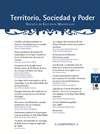Resumen
Resumen: Nuestro trabajo se centra en el estudio de San Miguel de Bárzana, un pequeño monasterio fundado en el siglo x, en tierras del actual concejo de Tinéu (Tineo), por una de las familias más relevantes de la nobleza regional. En concreto, son dos los aspectos hacia los que hemos dirigido la atención de modo preferente. El primero, la formación y la explotación del patrimonio monástico; un dominio de cierta entidad, que era explotado con ayuda de un campesinado dependiente y dentro del cual los espacios de aprovechamiento ganadero eran un elemento importante. El segundo, el poder. El acrecentamiento del poder de Bárzana, que alcanzó su culminación con la concesión del privilegio de coto en el año 1010, parece haber ido asociado al apoyo que este y otros monasterios de la zona prestaron a la monarquía, interesada en afirmar su autoridad en dicho territorio.
Palabras clave: poder, monacato, señorío, patrimonio, campesinado dependiente.
Abstract: The purpose of this essay is to contribute to the knowledge of feudal power in medieval Asturias. For this task, we focus on the study of the hereditary wealth and the noble functions of San Miguel de Bárzana, a small monastery situated in the territory of Tinéu (Tineo), in the west part of Asturias. Like many other monasteries, one of the most important families of the regional nobility set up Bárzana during the tenth century. As it was usual during this period, the Vela’s family, the founders of this monastery, concerned on provide it with varied possessions. Subsequent acquisitions —above all donations and, to a lesser extent, the sales— came to extend the initial patrimony, lend it proportions that fully exceed the size of an average dominion, though not comparable to the fortune of the great monasteries any way. Inside the territorial patrimony of San Miguel de Bárzana, the villae, more than forty, and the brañas, take shape as the elements most characteristic, an obvious sign of the importance that the monastic economy confer on cattle raising. As a good exponent of the feudal ruling class, the community of Bárzana was likewise owner of people. Moreover, upon the shoulders of this dependent peasantry unload the growing of its lands and the cattle breeding. The subjection bond was so firm at first that we can talk about real serves during the tenth and eleventh centuries. But eventually this subjection was softened, so that from twelfth century the social relations between the monastery and its dependents were made up of the basis of agrarian contracts of diverse kind, and between them the foro was the most common; a kind of contract that combines the economical and personal dependence of the foreros in relation to them owners. In 1010, Alfonso V made an important donation to San Miguel de Bárzana. He granted to the monastery the boundary privilege, the most valuated by the feudal lords, because it consisted of the cession, on the part of the monarch, of functions and competitions of jurisdictional order, as well as the right to perceive the rents that the exercise of those reported. It also granted to half of realengo and half of a mandación. The concession, which contributed decisively to the development of the monastery, which from then on was formed already like a real feudal lord, was framed in a climate dominated by the tensions between the monarchy and the nobility of the kingdom of León, whose effects were let also, feel in Asturias. In count Piñolo, at that time owner of the monastery, would look for and find the monarch a counterbalance to neutralize the rebellious nobility. Years later, that same count and his wife, the countess Aldonza, founded on the neighbouring territory of Cangas, the monastery of San Juan Bautista de Courias, that, very soon, was oing to become the great monastic centre of the west part of Asturias. When it came to form part of the foundational dowry of Courias the monastery of San Miguel de Bárzana it fell under the dependency of the new monastery.
Keywords: power, monastic life, jurisdiction, patrimony, dependent peasantry.

